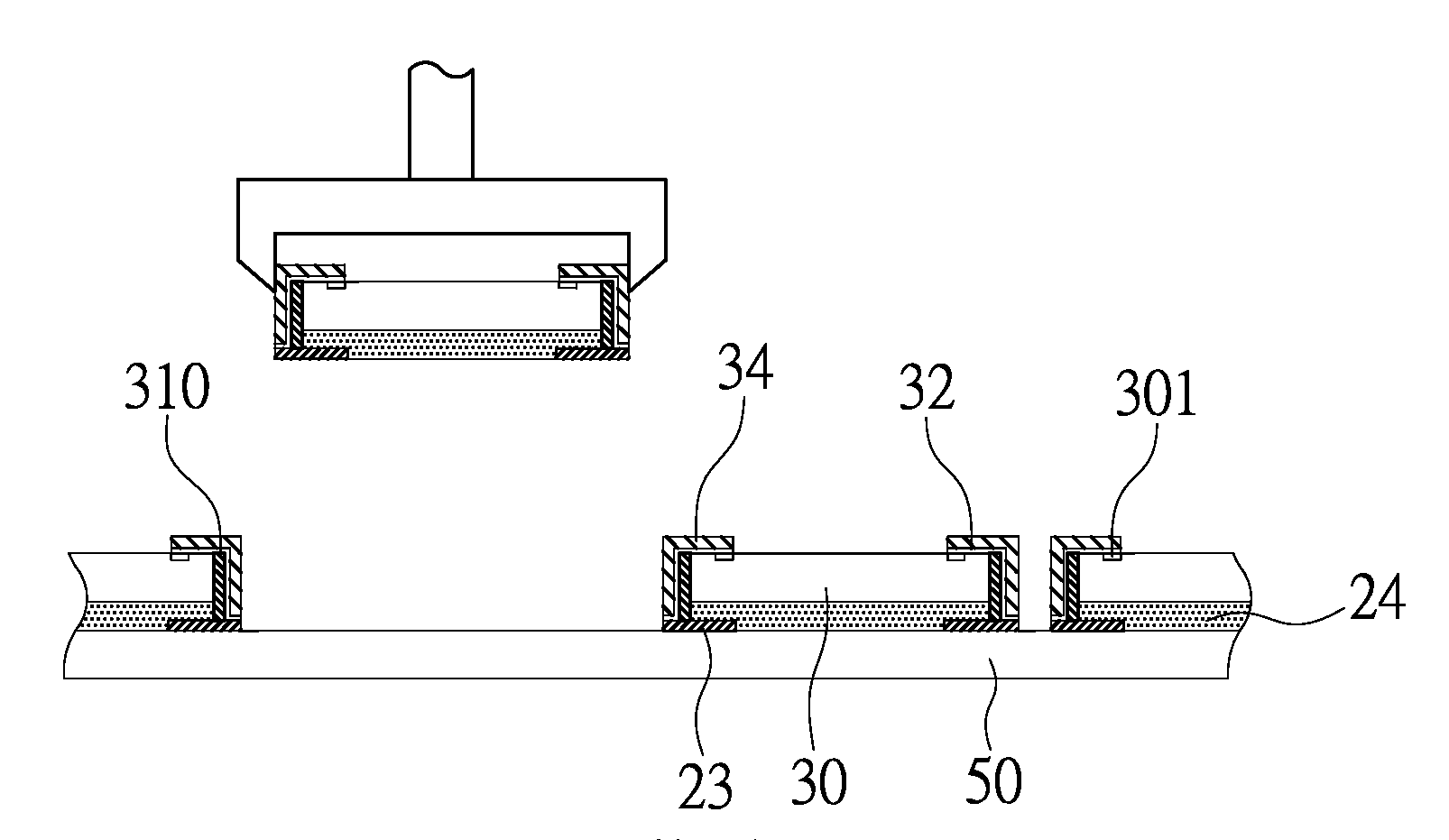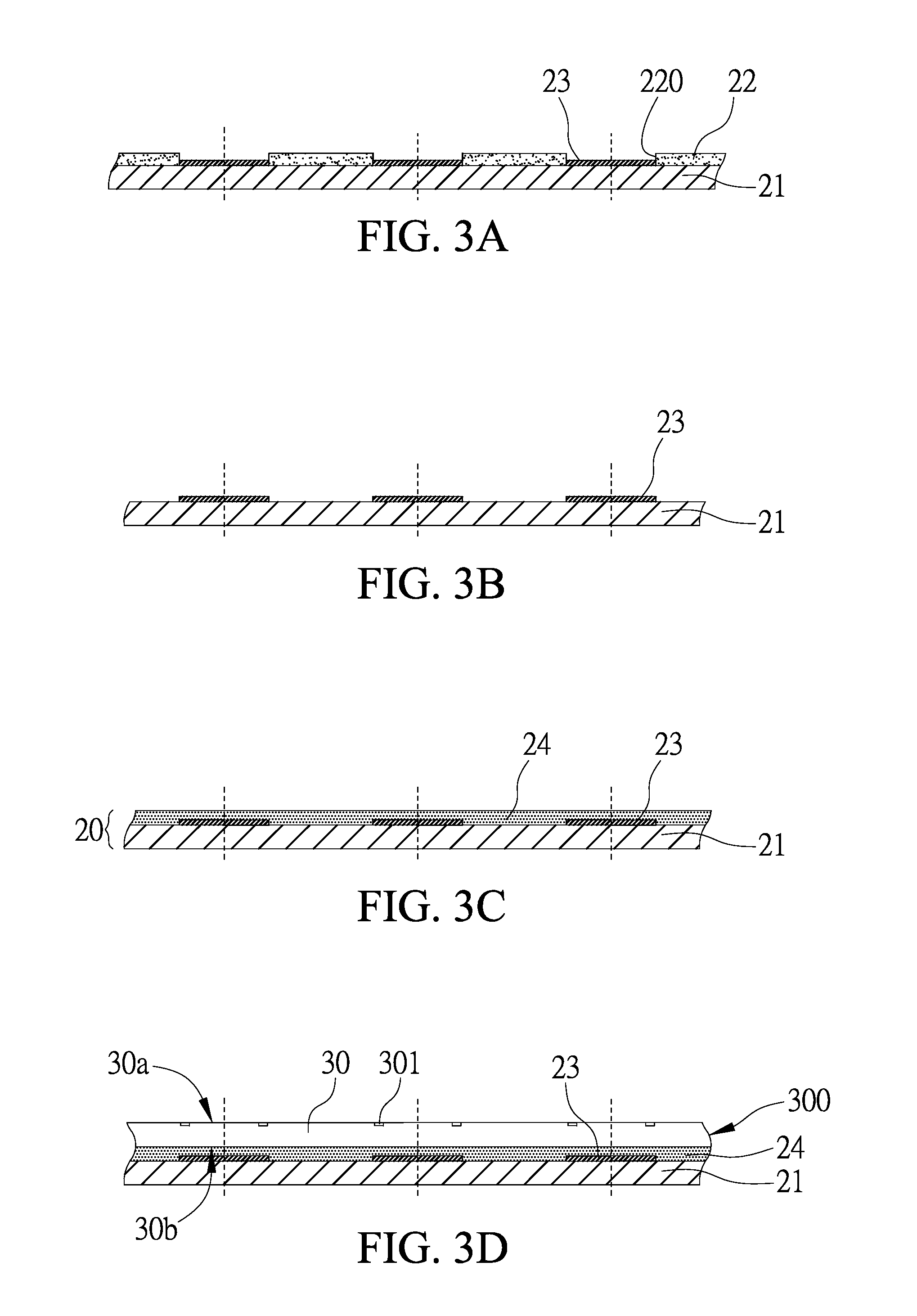Semiconductor Device and Its Fabrication Method
a technology of semiconductor devices and fabrication methods, applied in semiconductor devices, semiconductor/solid-state device details, electrical apparatus, etc., can solve the problems of increasing the fabrication cost, affecting the quality of electrical connection between the chips and the substrate, and reducing the efficiency of the chip integration. , to achieve the effect of enhancing the electrical function, and reducing the number of dies
- Summary
- Abstract
- Description
- Claims
- Application Information
AI Technical Summary
Benefits of technology
Problems solved by technology
Method used
Image
Examples
first embodiment
[0029]Please refer to FIGS. 3A through 3L, which are diagrams of a semiconductor device and a fabrication method thereof according to the first embodiment of the present invention.
[0030]As shown in FIGS. 3A through 3C, a bottom board 21 made of such as copper (Cu) is provided. A first resist layer 22 is formed on the bottom board 21, a plurality of apertures 220 are formed in the first resist layer 22 to expose part of the bottom board 21, and a plurality of conductive circuits 23 made of such as gold / palladium / nickel (Au / Pd / Ni) are formed in the apertures 220 by electroplating. The first resist layer 22 is removed, and an insulating layer 24 is formed on the bottom board 21 to cover the conductive circuits 23 and the bottom board 21. The insulating layer 24 is made of such as B-stage epoxy resin or polyimide. Thus, a carrier board 20 that includes the bottom board 21, the plurality of conductive circuits 23 on the bottom board 21, and the insulating layer 24 that covers the bottom ...
second embodiment
[0045]Please further refer to FIGS. 5A through 5D, which are diagrams of a semiconductor device and a fabrication method thereof according to the second embodiment of the present invention. For simplification, elements of the present embodiment that are same as or similar to those of the first embodiment are denoted with the same reference numerals.
[0046]As shown in FIGS. 5A and 5B, the semiconductor device and its fabrication method of the present embodiment are mostly similar to the first embodiment, the main difference therebetween is that after the metal layer 34 made of, for example copper / solder (Cu / Solder) or nickel / solder (Ni / Solder) is formed, a dielectric layer 35 is further formed on the active surfaces of the chips and the metal layer. The dielectric layer 35 is made of polyamide or an epoxy resin, for example.
[0047]As shown in FIG. 5C, the bottom board 21 is removed by means of etching, and a solder mask layer 36 such as green paint is formed on the insulating layer 24,...
PUM
 Login to View More
Login to View More Abstract
Description
Claims
Application Information
 Login to View More
Login to View More - R&D
- Intellectual Property
- Life Sciences
- Materials
- Tech Scout
- Unparalleled Data Quality
- Higher Quality Content
- 60% Fewer Hallucinations
Browse by: Latest US Patents, China's latest patents, Technical Efficacy Thesaurus, Application Domain, Technology Topic, Popular Technical Reports.
© 2025 PatSnap. All rights reserved.Legal|Privacy policy|Modern Slavery Act Transparency Statement|Sitemap|About US| Contact US: help@patsnap.com



